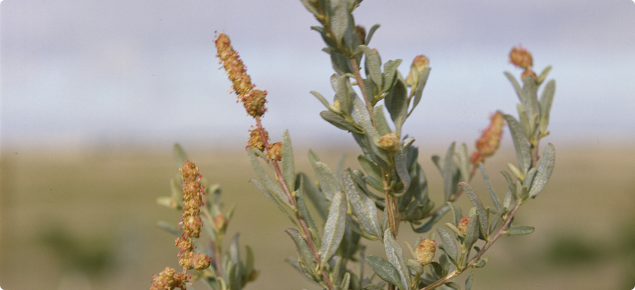Causes of salinity
Soluble or dissolved salt accumulates in soil over time from the small amount of salt that comes in from the ocean in rain.
Other major causes of salinity include:
- salty groundwater supplies
- rising water tables due to land clearing
- coastal winds depositing salt crystals on plants
- excessive application of grey water.
Symptoms of damage
Dissolved salts found in water and soil are easily absorbed by the roots of plants and transported to the leaf margins where they ‘burn’ the leaves. Soils with high levels of salt hinder the plant’s ability to uptake water and nutrients resulting in poor growth. Burning occurs on leaf tips and margins — yellowing progresses to brown and then black. Leaf shed and ‘die-back’ of growing tips can also occur and young plants can become stunted. Plants showing symptoms of salt damage will have thicker than normal leaves and appear a darker green as well as being stunted. Grasses appear dark green with burning on the margins.
Salt chemistry
Salinity is the measure of soluble salts found in water and soil and is measured by electrical conductivity (EC). Types of salts include common salt (sodium chloride), calcium and magnesium bicarbonates, chlorides and sulfates. Other salts such as nitrates and potassium are essential for plant growth.
Which plants are affected?
Some plants tolerate more salt than others. Tolerance is influenced by the type of plant, soil and environmental factors. Strawberries, citrus fruit, peas, carrots, azaleas and roses have a low tolerance to salinity. Olives, figs, asparagus, carnations and chrysanthemums are much more tolerant.
Salt build-up is generally less severe on sandy soils as the salts are easily leached out. Clay soils tend to accumulate salts due to inadequate drainage. Salts will also concentrate in dry soils. Increasing watering during hot dry conditions should remove salts from within the root zone.

